Home>diy>Home Improvement>How To Survive A Home Renovation
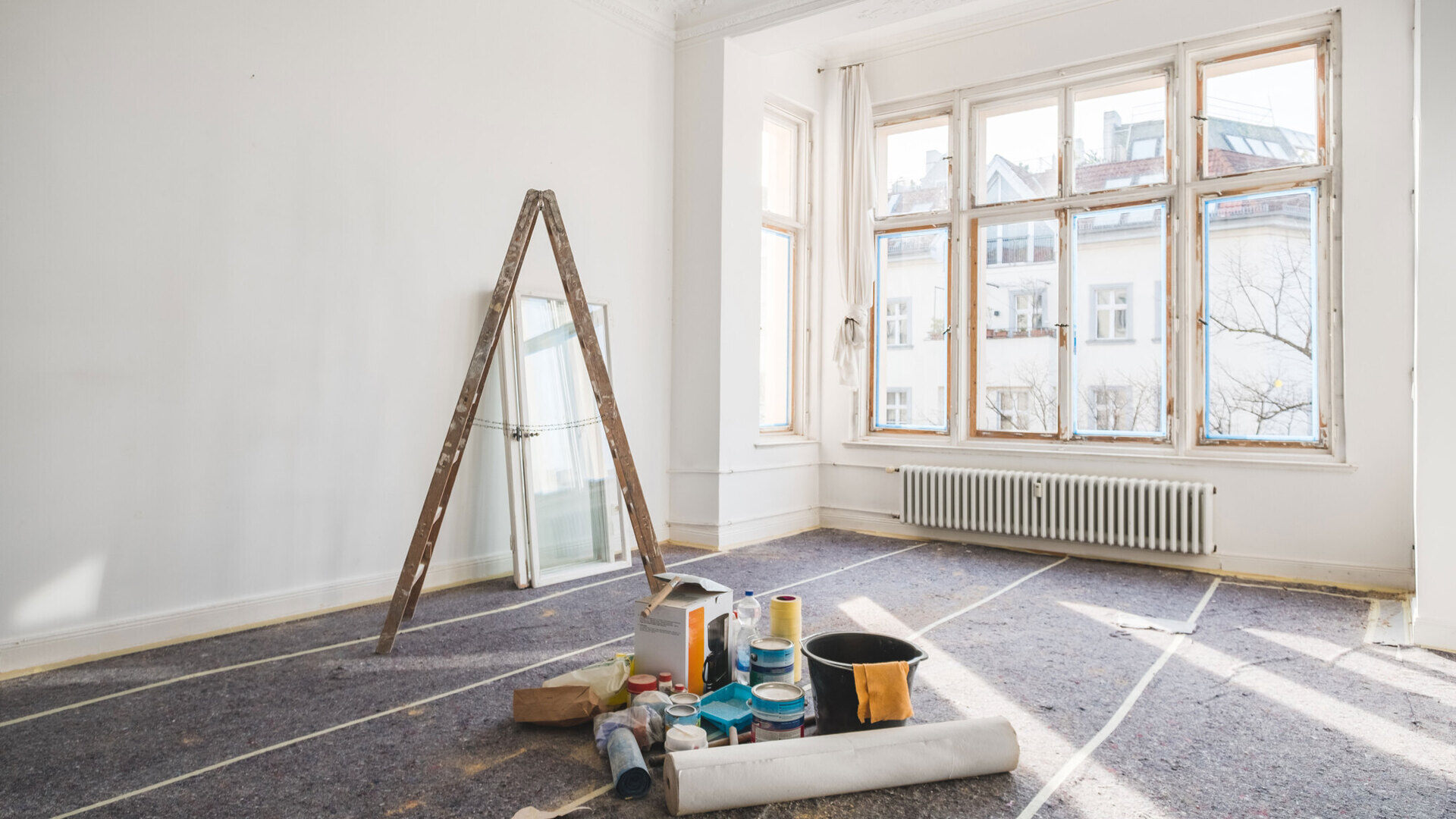

Home Improvement
How To Survive A Home Renovation
Modified: October 20, 2024
Learn essential tips and tricks for surviving a home renovation. From planning to execution, discover the key steps for a successful home improvement project.
(Many of the links in this article redirect to a specific reviewed product. Your purchase of these products through affiliate links helps to generate commission for Storables.com, at no extra cost. Learn more)
Introduction
Welcome to the wonderful and sometimes chaotic world of home renovations! Whether you’re looking to update your kitchen, remodel your bathroom, or give your entire home a facelift, embarking on a home renovation project can be an exciting and rewarding experience. However, it can also be a daunting task filled with challenges and uncertainties.
In this article, we will guide you through the process of surviving a home renovation from start to finish. We’ll provide you with valuable tips and insights to help you plan and prepare, communicate effectively with your contractor, protect your belongings, and manage the inevitable stresses that come with home improvement projects.
So, whether you’re a seasoned DIY enthusiast or just starting out on your first renovation adventure, buckle up and get ready to navigate the world of home improvements with confidence and ease.
Key Takeaways:
- Successfully navigating a home renovation requires thorough planning, effective communication with contractors, and prioritizing the health and well-being of your household. Embrace the journey and enjoy the creative process of transforming your living space.
- Paying attention to finishing touches, conducting thorough inspections, and staying organized are essential for a successful and satisfying home renovation outcome. Embrace the challenges and revel in the satisfaction of turning your vision into reality.
Read more: How To Survive A Pepper Spray Attack
Planning and Preparation
Before diving headfirst into a home renovation project, it’s crucial to take the time to plan and prepare. This stage sets the foundation for a successful and smooth renovation journey.
1. Set a Budget: Determine how much you’re willing to spend on your renovation project. Consider factors such as materials, labor costs, permits, and unexpected expenses. Having a well-defined budget will help you prioritize your needs and avoid overspending.
2. Hire a Contractor: If you’re not a seasoned DIYer, hiring a reputable contractor can save you time, stress, and potential costly mistakes. Do your research, ask for recommendations, and interview multiple contractors before making a final decision. Make sure to check their licenses, credentials, and previous work to ensure they’re the right fit for your project.
3. Obtain Permits: Depending on the scope of your renovation, you may need to obtain permits from your local building department. This is especially important for structural changes, electrical work, or plumbing modifications. Check with your contractor or local authorities to ensure you’re compliant with the necessary regulations.
4. Create a Timeline: Set a realistic timeline for your project. Consider any specific deadlines or events you want your renovation completed before. Keep in mind that unforeseen delays may occur, so adding a buffer to your timeline is advisable.
5. Temporary Living Arrangements: Depending on the extent of your renovation, you may need to make arrangements for temporary living. This could involve staying with family or friends, renting a temporary space, or setting up a makeshift living area in another part of your home.
6. Protecting Your Belongings: Before the renovation begins, take the time to protect your belongings. Cover furniture, remove fragile items, and pack away valuables to prevent damage or loss during the construction process.
By investing time in thorough planning and preparation, you’ll set the stage for a successful and stress-free home renovation project.
Setting a Budget
Setting a budget is a crucial step when planning for a home renovation. It helps you determine how much you’re comfortable spending and ensures that you stay within your financial limits. Here are some key considerations when setting your renovation budget:
Evaluate your Finances: Take a close look at your financial situation and determine how much you can realistically afford to allocate towards your renovation project. Consider your income, savings, and any available financing options.
Research Costs: Research the average costs of materials, labor, and other related expenses for the type of renovation you’re planning. This will give you a realistic estimate of how much you should budget for each aspect of the project.
Account for Contingencies: It’s essential to include a contingency fund in your budget. Unforeseen issues or changes in design can arise during the renovation process, and having a backup fund will help you address these unexpected expenses without compromising the project.
Set Priorities: Determine your renovation priorities and allocate a larger portion of your budget to the areas that matter most to you. Whether it’s upgrading your kitchen appliances or transforming your bathroom into a spa-like oasis, knowing where to focus your spending will help you make informed decisions.
Consider Value-Added Investments: Think about the potential return on investment (ROI) for your renovation project. Some renovations, such as kitchen remodels or bathroom renovations, have a higher ROI and can increase the value of your home. Balancing your budget with value-added investments can be a wise financial decision in the long run.
Get Multiple Quotes: Reach out to several contractors and suppliers to get multiple quotes for materials and labor. This will give you a better idea of the average costs in your area and help you negotiate better deals. Remember to choose professionals who provide quality work within your budget constraints.
Track Expenses: Throughout the renovation process, keep track of your expenses to ensure you’re staying on budget. Use a spreadsheet or budgeting app to document all costs, including materials, labor, permits, and any unexpected expenses that may arise. Regularly reviewing your expenditures will help you identify areas where you may need to make adjustments.
By setting a well-defined budget and carefully considering your financial situation and renovation priorities, you’ll be able to proceed with your home renovation project confidently and avoid potential financial stress down the road.
Hiring a Contractor
When it comes to home renovations, hiring a contractor can make all the difference in the success of your project. A skilled and reliable contractor can save you time, money, and stress by ensuring that the work is done efficiently and to a high standard. Here are some essential factors to consider when hiring a contractor:
Do Your Research: Start by researching and compiling a list of potential contractors in your area. Seek recommendations from friends, family, or neighbors who have recently completed renovations. You can also utilize online platforms and directories that provide reviews and ratings for contractors.
Check Licenses and Credentials: Verify that the contractors you’re considering are licensed and insured to work in your area. This will protect you from any liability if accidents or damages occur during the renovation process. Additionally, inquire about their certifications and professional affiliations, as these demonstrate their commitment to quality workmanship.
Review Previous Work: Take the time to review the contractor’s portfolio or request references from previous clients. Look for completed projects that are similar in scope and complexity to your own renovation. This will give you an idea of their work style, attention to detail, and overall quality of craftsmanship.
Interview Multiple Contractors: Set up meetings or phone calls with at least three contractors from your shortlist. Use this opportunity to ask questions, discuss your project requirements, and gauge their communication and problem-solving abilities. Pay attention to how well they listen to your needs and whether they provide thoughtful and knowledgeable responses.
Obtain Detailed Written Estimates: Once you’ve narrowed down your choices, request written estimates from the remaining contractors. These estimates should include a breakdown of costs for materials, labor, permits, and any additional charges. Be wary of contractors who provide vague or incomplete estimates, as this can lead to unexpected costs later on.
Communication is Key: During the selection process, evaluate how well you communicate with each contractor. Clear and open communication is vital to ensuring that your vision is understood and executed correctly. A contractor who promptly responds to your inquiries, provides regular updates, and seeks your input throughout the project is a good sign of their commitment to customer satisfaction.
Trust Your Instincts: Ultimately, trust your instincts when choosing a contractor. Consider their professionalism, reliability, and compatibility with your personality and communication style. Building a good working relationship with your contractor is crucial for a successful renovation experience.
By conducting thorough research, interviewing multiple contractors, and considering key factors such as licenses, credentials, and communication, you’ll be able to select a contractor who is the right fit for your home renovation project.
Obtaining Permits
When undertaking a home renovation project, it’s important to ensure that you have all the necessary permits before starting any construction work. Building permits are legal requirements that ensure the safety and compliance of your project with local building codes and regulations. Here are some key steps to follow when obtaining permits for your renovation:
Research Applicable Permits: Start by researching which permits are required for your specific renovation project. Different jurisdictions may have different requirements, so it’s important to familiarize yourself with the specific regulations in your area. Examples of permits you may need include building permits, electrical permits, plumbing permits, and mechanical permits.
Contact Your Local Building Department: Reach out to your local building department or municipality to inquire about the permit application process. They can provide you with the necessary forms, guidelines, and any additional documentation required for your specific project. Make sure to gather all the required information before submitting your application.
Prepare Detailed Plans and Documentation: Most permit applications will require detailed plans and specifications of your renovation project. These can include architectural drawings, engineering reports, floor plans, and material specifications. Work closely with your architect, designer, or contractor to ensure that all required documentation is prepared accurately and meets the building department’s requirements.
Submit Your Permit Application: Once you have gathered all the required documents, submit your permit application to the appropriate building department. Pay any applicable fees and ensure that all information is complete and accurate. Depending on the complexity of the project and the workload of the building department, it may take several weeks for your application to be reviewed and approved. Be patient, as rushing this process could lead to potential issues down the line.
Obtain Approval: Once your permit application is reviewed and approved, you will receive an official permit. Make sure to display this permit prominently on your property during the renovation process, as building inspectors may visit periodically to ensure that the work is being carried out according to the approved plans and local regulations.
Follow Building Department Guidelines: Throughout the renovation process, it’s important to adhere to the guidelines and requirements set forth by the building department. This includes scheduling necessary inspections at designated stages of the project, providing access to the building inspector, and addressing any issues or violations promptly.
Keep Records: Maintain organized records of all permit-related documents, including the permit itself, inspection reports, and any approved changes or modifications made during the construction process. These records may be useful for future reference or potential resale of your property.
Failure to obtain the necessary permits can result in fines, complications with insurance claims, or future challenges when selling your home. By following the proper permit application process and adhering to building department guidelines, you can ensure the legality, safety, and compliance of your home renovation project.
Read more: How To Survive Stressful Home Life
Creating a Timeline
A well-planned timeline is essential for keeping your home renovation project on track and ensuring that all tasks are completed in a timely manner. By creating a detailed timeline, you can effectively manage the project, coordinate with contractors, and anticipate any potential delays. Here are some key steps to consider when creating a timeline for your renovation:
Assess the Scope of the Project: Begin by assessing the scope of your renovation project. Determine the specific tasks that need to be completed and break them down into smaller, manageable steps. This will help you visualize the overall timeline and identify any dependencies between tasks.
Set Realistic Timeframes: Be realistic about the time it will take to complete each task. Consult with your contractor or other professionals involved in the project to get an accurate estimate. Keep in mind that unexpected delays may occur, so it’s wise to add a buffer of extra time to your initial estimates.
Order of Operations: Plan the order in which tasks will be carried out. Some tasks may need to be completed before others can begin. For example, electrical and plumbing work should be scheduled before drywall installation. Understanding the dependencies between tasks will help you create a logical sequence and avoid unnecessary delays.
Consider Seasonal Constraints: Depending on the nature of your renovation project, certain tasks may be affected by seasonal constraints. For example, exterior work may be difficult or impossible during extreme weather conditions. Take these constraints into account when creating your timeline to ensure that tasks are scheduled appropriately.
Coordinate with Contractors and Suppliers: Communicate with your contractors, subcontractors, and suppliers to align their schedules with your renovation timeline. Collaborate closely with them to ensure that the necessary materials and resources are available when needed. Regular communication will help keep everyone on track and minimize potential delays.
Allow for Inspections: Incorporate time for necessary inspections at various stages of your renovation project. Building inspectors may need to review and approve certain aspects of the work before proceeding to the next phase. You may need to schedule inspections for electrical, plumbing, and structural components to ensure compliance with building codes.
Track Progress: Regularly review and update your timeline as the project progresses. Keep notes on completed tasks, any changes or delays, and upcoming milestones. This will help you stay organized and maintain a clear overview of the project’s progress.
Communicate Changes: If adjustments or changes need to be made to the timeline, communicate these changes to all relevant parties, including contractors, suppliers, and any other professionals involved in the project. Clear and consistent communication will help minimize confusion and keep everyone informed.
A well-structured timeline helps ensure that your renovation project stays on schedule and avoids unnecessary delays. By taking the time to plan and create a detailed timeline, you’ll have a roadmap to guide you through the renovation process and help you achieve your desired results in a timely manner.
Temporary Living Arrangements
When undergoing a significant home renovation project, it’s important to consider temporary living arrangements. Depending on the scope of the renovation and the level of disruption it will cause, you may need to find alternative living accommodations during the construction process. Here are some considerations to keep in mind when planning temporary living arrangements:
Evaluate the Scope of the Renovation: Assess the extent of the renovation and determine if it will render your home uninhabitable or significantly disrupt your daily routines. If major structural work is being done, or if essential utilities such as water or electricity will be unavailable for an extended period, it may be necessary to find alternative living arrangements.
Stay with Family or Friends: Reach out to family or friends who may have extra space available and are willing to accommodate you during the renovation. Staying with loved ones can provide a comfortable and familiar environment while minimizing disruption to your daily life. Be sure to communicate your expected timeframe to ensure a smooth transition.
Book a Temporary Rental: If staying with family or friends is not an option, consider renting a temporary place nearby. Look for short-term rentals, vacation rentals, or extended-stay options in your area. Websites and apps such as Airbnb, VRBO, or local property management companies can help you find suitable accommodations. Research the options and check availability well in advance to secure the best arrangements.
Set Up a Temporary Living Space: If a complete move is not feasible, consider setting up a temporary living space within your own home. This could involve designating a specific area, such as a spare bedroom or basement, where you can create a makeshift living area with essential furniture and appliances. While this option may require some adjustments and compromises, it allows you to continue living in your home during the renovation.
Arrange for Storage: Prior to the renovation, assess your belongings and determine what can be safely stored away during the construction process. Look for local storage facilities that offer secure and climate-controlled units. Properly label and organize your items for easy retrieval once the renovation is complete.
Plan for Pets and Children: If you have pets or children, consider their needs when making temporary living arrangements. Ensure that the temporary space or rental allows for their safety and comfort. If necessary, arrange for pet care or seek temporary accommodation options that are pet-friendly.
Coordinate with Contractors: Communicate your temporary living arrangements with your contractor to ensure a smooth workflow. This includes providing them with access to the areas they need to work on while respecting your privacy and space in the temporary living arrangement.
Temporary living arrangements are a crucial aspect of managing a home renovation project. By assessing the scope of the renovation and considering options such as staying with family or friends, booking a temporary rental, setting up a temporary living space, or arranging for storage, you can minimize disruption and maintain a comfortable living situation throughout the renovation process.
Protecting Your Belongings
During a home renovation, it is important to take proactive measures to protect your belongings from potential damage or loss. The construction process can create dust, debris, and hazardous conditions that can pose a risk to your personal items. Here are some essential tips to help you safeguard your belongings during a renovation:
Remove Fragile Items: Prior to the start of the renovation, remove any fragile or valuable items from the area being renovated. This includes delicate artwork, collectibles, electronics, and heirlooms. Store them in a secure location away from the construction zone to prevent accidental damage.
Cover Furniture and Flooring: Cover furniture and flooring with protective sheets or tarps to shield them from dust, paint, or other potential damage during the renovation process. This will help preserve the condition of your belongings and make it easier to clean up afterward.
Pack and Label Boxes: If you need to clear out an entire room or area, pack your belongings in sturdy boxes and label them accordingly. This will make it easier to find specific items once the renovation is complete and you’re ready to move everything back in.
Secure Storage: If the renovation will affect multiple areas of your home or you require additional space to store your belongings, consider renting a storage unit. Choose a facility that offers secure and climate-controlled units to keep your items safe from damage or moisture.
Protect Upholstery: If you have upholstered furniture in the renovation area, consider covering it with plastic or fitted covers to protect it from dust, paint, or debris. This will help preserve the fabric and ensure it remains clean and undamaged.
Arrange for Fragile Item Storage: For particularly delicate items such as fine china, crystal, or sensitive electronics, consider packing them with extra care and storing them in a separate location away from the construction zone. This will minimize the risk of accidental damage.
Communicate with Contractors: Clearly communicate your expectations regarding the protection of your belongings to your contractors. Ensure that they are aware of any specific items or areas that require extra care. Set guidelines for cleanliness and safety during the renovation process to reduce the risk of accidents or damage.
Regular Cleaning: Throughout the renovation process, schedule regular cleaning sessions to remove dust and debris from surrounding areas. This will not only help protect your belongings but also create a cleaner and healthier living environment while the work is being carried out.
By taking proactive steps to protect your belongings, you can minimize the risk of damage or loss during a home renovation. With careful planning, packing, and communication with your contractors, you can ensure that your personal items remain safe and in good condition throughout the renovation process.
Managing Dust and Debris
Dust and debris are inevitable during a home renovation project, but there are measures you can take to effectively manage and minimize their impact. Proper dust and debris management not only helps protect your belongings but also promotes a cleaner and healthier living environment. Here are some essential tips to help you manage dust and debris during your renovation:
Contain the Construction Area: Establish barriers or temporary walls to contain the construction area as much as possible. This helps prevent dust and debris from spreading to other parts of your home. Use plastic sheeting or zip walls to create sealed zones and minimize the movement of particles.
Use Floor Protection: Lay down protective coverings on floors such as drop cloths or plastic sheets to catch dust and debris. Secure them with tape or other adhesive materials to prevent them from shifting during the construction process.
Seal Off Vents and Ducts: Seal off air vents and ducts in the renovation area with plastic or cardboard to prevent dust from circulating through your ventilation system. This will help maintain clean air quality in other parts of your home.
Turn Off HVAC Systems: Turn off heating, ventilation, and air conditioning (HVAC) systems during construction to avoid spreading dust particles throughout your home. This will also prevent the accumulation of dust within the HVAC system itself.
Use Dust-Containment Strategies: If your renovation involves activities that generate a significant amount of dust, such as sanding, cutting, or demolition, consider using dust-containment strategies. This can include using wet methods to minimize dust, using dust extractors or vacuums with HEPA filters, and employing negative air pressure systems to capture airborne particles.
Regularly Clean and Vacuum: Schedule frequent cleaning and vacuuming sessions during the renovation process to remove dust and debris. Use a vacuum cleaner with a HEPA filter to effectively capture fine particles. Consider covering ventilation grilles with filters to prevent dust from being recirculated.
Protect Electronics and Appliances: Cover electronic devices, appliances, and furniture with plastic sheeting or dust covers to prevent dust from settling on them. Remove or cover items that are sensitive to dust, such as computer equipment or audio systems, to ensure they remain clean and functional.
Monitor Post-Construction Cleaning: Once the renovation is complete, conduct a thorough post-construction cleaning to remove any remaining dust and debris. This can include wiping down surfaces, vacuuming, mopping floors, and cleaning ventilation grilles.
Air Out the Space: After construction is finished, open windows and use fans to ventilate the renovated area. This will help remove any lingering dust particles and freshen the air within your home.
By implementing these strategies, you can effectively manage and minimize the spread of dust and debris during a home renovation. Taking proactive measures will not only protect your belongings but also contribute to a cleaner and healthier living environment throughout the construction process.
Be prepared for unexpected delays and expenses during a home renovation. Set aside a contingency fund to cover any unforeseen issues that may arise.
Read more: How To Survive The Night Shift And Home Life
Communicating with Your Contractor
Effective communication with your contractor is essential for a successful home renovation project. Clear and open lines of communication help ensure that your vision is understood and executed correctly, while also fostering a positive working relationship. Here are some important tips for communicating effectively with your contractor:
Establish Clear Expectations: From the outset, clearly communicate your expectations and goals for the renovation project. Discuss your vision, desired outcomes, and any specific details or preferences you have. This will help align everyone involved in the project and set the stage for a successful collaboration.
Maintain Regular Communication: Establish a consistent communication schedule with your contractor. This can be in-person meetings, scheduled phone calls, or regular email updates. Regularly touch base to discuss progress, address any questions or concerns, and ensure everyone is on the same page.
Ask Questions: Don’t hesitate to ask questions or seek clarification on any aspects of the renovation. If you don’t understand something or need more information, communicate it to your contractor. They should be willing to provide explanations and ensure that you’re well-informed throughout the process.
Share Ideas and Inspiration: If you come across new ideas or design inspiration during the renovation, share them with your contractor. This helps them understand your evolving vision and may spark creative solutions or improvements to the project.
Listen to Professional Input: While it’s important to communicate your preferences, also listen to your contractor’s professional input. They have experience and expertise in construction, and their insights can lead to better outcomes. Consider their suggestions, weigh the pros and cons, and make informed decisions together.
Address Concerns Promptly: If any concerns or issues arise during the renovation process, address them promptly and directly with your contractor. Do not let problems linger, as they can escalate and impact the project’s timeline and quality. Open and honest communication helps resolve issues more efficiently.
Document Changes and Agreements: Keep written documentation of any changes or agreements made throughout the renovation. This includes changes to the scope of work, timeline adjustments, and any additional costs. Having everything in writing helps avoid misunderstandings and provides a reference point if any disputes arise later.
Be Respectful and Considerate: Maintain a respectful and considerate attitude towards your contractor and their team. Treat them as partners in the renovation process. Good communication is a two-way street, and fostering a positive working relationship will contribute to a smoother and more enjoyable experience for everyone involved.
Provide Feedback: Once the renovation is complete, provide feedback to your contractor on their workmanship, professionalism, and the overall experience. This feedback can be valuable for them in improving their services and can also help other homeowners looking for a contractor in the future.
By following these communication tips, you can establish a productive and collaborative relationship with your contractor. Effective communication ensures that your expectations are met, issues are addressed promptly, and the renovation project moves forward smoothly.
Dealing with Unexpected Issues
In any home renovation project, it’s not uncommon to encounter unexpected issues or challenges along the way. These can range from hidden structural problems to delays in material delivery. While these unforeseen issues can be frustrating, it’s important to handle them effectively to keep your project on track. Here’s how to deal with unexpected issues during your home renovation:
Stay Calm and Flexible: When faced with unexpected issues, it’s important to stay calm and flexible. Remind yourself that challenges are a normal part of the renovation process, and try to approach them with a positive mindset. Being flexible will help you adapt your plans and find alternative solutions.
Communicate with Your Contractor: The first step when encountering an issue is to communicate with your contractor. Explain the situation, provide all relevant details, and seek their professional advice. Your contractor may have previous experience with similar issues and can suggest appropriate solutions or adjustments to the renovation plan.
Assess the Impact: Evaluate the impact of the issue on your renovation project. Determine whether it’s a minor setback that can be quickly resolved or a more significant challenge that requires careful consideration and adjustment to the timeline or budget.
Consult with Experts: In some cases, you may need to consult with additional experts or specialists to address unexpected issues. This could include hiring structural engineers, plumbers, electricians, or other professionals with the expertise needed to resolve the problem effectively. Seek recommendations from your contractor or conduct research to find qualified professionals in your area.
Explore Alternative Solutions: If the unexpected issue poses a significant obstacle to your original renovation plans, work with your contractor and experts to explore alternative solutions. This could involve modifying the design, adjusting the timeline, or finding creative workarounds that still achieve your desired outcome within the constraints of the situation.
Consider the Budget: Reassess your budget in light of the unexpected issue. Determine whether there are any additional costs associated with addressing the problem and factor them into your financial plan. If the issue leads to significant cost overruns, discuss potential solutions with your contractor and consider adjustments to the scope of work or materials to stay within your budget.
Document Changes and Adjustments: Keep a record of any changes, adjustments, and agreements made as a result of the unexpected issue. This includes documenting conversations, revised plans, cost estimates, and any pertinent written correspondence. Having everything documented provides clarity and minimizes the risk of misunderstandings or disputes in the future.
Stay Focused on the End Goal: It’s important to stay focused on the end goal throughout the renovation process, even when unexpected issues arise. Remind yourself of the improvements and enhancements you envision for your home. Trust that with proper communication, collaboration, and creative problem-solving, you will overcome any challenges that come your way.
Dealing with unexpected issues during a home renovation requires patience, clear communication, and a willingness to adapt. By approaching these challenges with a calm and flexible mindset, you can find effective solutions and keep your renovation project moving forward towards a successful completion.
Making Decisions and Design Choices
When undertaking a home renovation project, making decisions and design choices is a vital part of the process. From selecting materials and finishes to deciding on layout changes, these choices will shape the overall look and feel of your newly renovated space. Here are some key tips to help you navigate the decision-making process and make informed design choices:
Define Your Vision: Start by defining your vision for the renovated space. Consider the overall style, ambiance, and functionality you want to achieve. This will serve as a guiding principle when making design decisions and help you stay focused on the end result.
Research and Gather Inspiration: Engage in research and gather inspiration from various sources such as design magazines, websites, social media platforms, and even visiting showrooms or model homes. Look for elements that speak to your personal style and preferences, and use them as a reference throughout your decision-making process.
Consider Functionality: Balance aesthetics with practicality by considering the functionality of different design choices. Think about how you use the space and the specific needs and requirements you have. For example, if you’re renovating a kitchen, prioritize storage, workflow, and adequate countertop space.
Set a Budget: Determine your budget early in the process so that you can make design choices that align with your financial limits. Allocate funds for each aspect of the renovation, including materials, fixtures, and furnishings. Be sure to account for any unforeseen costs or contingencies in your budget planning.
Consult with Professionals: Seek advice from professionals such as interior designers, architects, or contractors. They can offer valuable insights and expertise to guide your decision-making process. Collaborating with professionals can help you make informed choices that align with your vision and maximize the potential of your space.
Consider Longevity and Timelessness: When making design choices, think beyond current trends and consider the longevity and timelessness of your selections. Opt for elements that will stand the test of time and continue to be appealing and relevant for years to come. Classic design elements and neutral color palettes can be versatile and adapt well to changing styles.
Take Samples and Test Swatches: When selecting materials such as paint colors, flooring, or countertops, obtain samples or swatches to view them in your space. Test them under different lighting conditions to ensure they align with your vision. This will help you make more accurate and confident decisions.
Prioritize Sustainability: Incorporate eco-friendly and sustainable options into your design choices whenever possible. Use materials and products that are durable, recyclable, and made from sustainable sources. Consider energy-efficient appliances and fixtures to reduce your environmental footprint.
Trust Your Instincts: While input from professionals, friends, and family is valuable, ultimately trust your instincts when making design decisions. You are the one who will be living in the space, so it should reflect your personal style and taste. Listen to your intuition and make choices that resonate with you.
Be Decisive, but Open to Flexibility: While decisiveness is important, remain open to flexibility as the renovation progresses. Unexpected circumstances or new options may arise, requiring you to adjust your design choices. Strike a balance between being firm in your decisions and being adaptable when necessary.
Making decisions and design choices for your home renovation project can be exciting, but also overwhelming. By defining your vision, conducting research, considering functionality, setting a budget, consulting with professionals, and trusting your instincts, you’ll be able to make informed and confident choices that transform your space into the home of your dreams.
Staying Organized
Organizing your home renovation project is essential for keeping things running smoothly and ensuring that tasks are completed in a timely manner. From staying on top of paperwork to managing project schedules, staying organized can greatly reduce stress and help you stay on track. Here are some key tips to help you stay organized during your home renovation:
Create a Project Binder: Start by creating a project binder or digital folder to keep all important documents related to your renovation. This can include contracts, permits, design plans, invoices, and any other relevant paperwork. Having everything in one place makes it easier to access and reference when needed.
Establish a Project Timeline: Develop a detailed project timeline, outlining the tasks that need to be completed and their respective deadlines. This will help you visualize the overall plan and stay organized throughout the renovation process. Refer to the timeline regularly to track progress and make adjustments as needed.
Use Project Management Tools: Utilize project management tools or apps to keep track of project details, deadlines, and task assignments. These tools can help you stay organized, set reminders, and collaborate with your contractor and other team members.
Maintain a Calendar: Use a calendar to schedule important renovation-related events, such as contractor meetings, deliveries, inspections, or other key milestones. Sync your calendar across devices and set reminders to stay on top of important dates.
Create To-Do Lists: Break down the renovation tasks into smaller, manageable to-do lists. Prioritize tasks based on urgency and deadlines. This will help you focus on one task at a time and ensure that nothing falls through the cracks.
Track Expenses: Keep a record of all renovation-related expenses, including materials, labor, permits, and any unexpected costs that may arise. Maintain receipts and invoices in a designated folder or in a digital format for easy reference. Regularly review your expenses to ensure they align with your budget.
Communicate and Document Changes: Openly communicate any changes or adjustments to your contractor and document them in writing. This includes changes to the design plans, materials, or timeline. Clear documentation of changes will help prevent misunderstandings and ensure everyone is on the same page.
Stay in Regular Contact with Your Contractor: Schedule regular check-ins with your contractor to review progress, discuss any concerns, and clarify expectations. Clear and consistent communication will help keep the project organized and address any issues promptly.
Keep a Renovation Journal: Maintain a renovation journal to document your thoughts, ideas, and observations throughout the project. Use it to record any design inspiration, paint colors, product details, or room dimensions. This can serve as a valuable reference for future reference or if you decide to take on additional renovation projects in the future.
Maintain a Clean and Organized Workspace: As the renovation progresses, keep the workspace clean and organized. Put tools away after use, dispose of debris properly, and create designated areas for different materials and equipment. This will help maintain safety and efficiency during the construction process.
Staying organized during your home renovation project will help you stay focused, reduce stress, and ensure that everything runs smoothly. By creating a project binder, establishing a timeline, utilizing project management tools, and maintaining clear communication, you’ll be able to navigate the renovation process with ease and achieve the desired results.
Read more: How To Survive Guarana Seeds
Managing Stress and Emotions
A home renovation project can be an exciting venture, but it can also bring about stress and a range of emotions. Dealing with the disruption, decision-making, and unexpected challenges can take a toll on your well-being. Here are some strategies to help you manage stress and emotions during your home renovation:
Prepare Mentally: Before embarking on the renovation, prepare yourself mentally for the challenges that may arise. Understand that there may be unexpected delays, hiccups, or changes to the original plan. Having a realistic mindset will help you navigate these situations with greater ease and resilience.
Set Realistic Expectations: Set realistic expectations for your renovation project. While it’s important to have a vision and goals, it’s also crucial to acknowledge that not everything may go exactly as planned. Understand that renovations can be complex, and there may be variables beyond your control.
Communicate Openly: Effective communication with your contractor and other professionals involved in the project is key. Express your concerns, ask questions, and communicate any changes or issues promptly. Clear and open communication can help alleviate stress and prevent misunderstandings.
Take Breaks and Timeouts: Renovations can be overwhelming, so be sure to take breaks and timeouts when needed. Step away from the project, engage in activities that bring you joy and relaxation, and recharge your energy. Taking care of your well-being is crucial throughout the renovation process.
Practice Stress-Relief Techniques: Employ stress-relief techniques to manage stress levels. This can include deep breathing exercises, meditation, yoga, or engaging in hobbies that bring you a sense of calm. Find what works best for you and incorporate these techniques into your daily routine.
Seek Support: Reach out to friends, family, or support groups to share your renovation experience and seek emotional support. Sometimes simply venting or discussing your concerns with others who understand can help alleviate stress and provide perspective.
Take Ownership of Decisions: Be proactive in making decisions related to the renovation. By taking ownership of your choices, you’ll feel more empowered and confident throughout the process. Trust your instincts and be confident in the decisions you make.
Focus on the End Result: Whenever stress or frustration arises, remind yourself of the end goal – a beautifully renovated home. Visualize the final outcome and the joy it will bring. Keeping your eye on the prize can help you stay motivated and positive.
Celebrate Achievements: Recognize and celebrate the milestones and achievements throughout the renovation journey. Acknowledge the progress made and the hard work put into the project. Finding joy in the small successes can boost morale and keep you motivated even during challenging times.
Schedule Self-Care Time: Prioritize self-care during the renovation process. Schedule time for relaxation, exercise, hobbies, or activities that bring you joy and help you unwind. Taking care of yourself physically and mentally will enhance your ability to handle stress and maintain a positive mindset.
Remember, a home renovation is a temporary phase, and the challenges you encounter will be outweighed by the joy of a beautifully transformed space. By practicing stress management techniques, staying proactive, seeking support, and focusing on the end result, you can navigate the renovation process with resilience and a positive attitude.
Maintaining a Healthy Living Environment
During a home renovation, it’s important to prioritize the health and well-being of everyone in your household. The construction process can introduce dust, volatile organic compounds (VOCs), and other pollutants into the air, which can have negative effects on indoor air quality. Here are some key tips to help you maintain a healthy living environment during your home renovation:
Contain Dust and Debris: Minimize the spread of dust and debris by containing the construction area as much as possible. Use barriers, plastic sheets, or zip walls to prevent particles from entering other areas of your home. This will help maintain cleaner air in unaffected spaces.
Seal Off Ventilation Systems: Temporarily seal off heating, ventilation, and air conditioning (HVAC) vents or turn off the system in the construction zone to prevent dust and pollutants from being circulated throughout your home. Consider using air purifiers with HEPA filters to further enhance indoor air quality.
Upgrade Air Filters: Upgrade your HVAC air filters to high-efficiency filters with a MERV (minimum efficiency reporting value) rating suitable for your system. These filters can capture smaller particles and help improve air quality by reducing dust and allergens in your home.
Ventilate Properly: Open windows and use fans to ventilate the renovated areas as much as possible during and after the construction process. This helps remove any lingering odors or pollutants and promotes fresh air circulation within your home.
Use Low VOC Products: Opt for low or zero VOC paints, adhesives, sealants, and other renovation materials. VOCs are chemicals found in many common building products that can off-gas and contribute to poor indoor air quality. Choosing low VOC alternatives can help reduce exposure to these harmful substances.
Keep Clean and Dust Regularly: Regularly clean and dust surfaces in unaffected areas of your home to minimize the accumulation of dust and debris. Use microfiber cloths or vacuum cleaners with HEPA filters to trap smaller particles effectively.
Maintain a Clean Workspace: If you have a home office or workspace adjacent to the renovation area, keep it tidy and clean. Dust and debris can easily migrate to these areas, affecting air quality and potentially impacting your health and productivity.
Consider Safe Materials for Surfaces: When selecting materials for surfaces such as countertops, flooring, and cabinetry, choose options that are easy to clean and maintain. Non-porous materials are typically more resistant to staining and can be cleaned more effectively, reducing potential sources of indoor air contaminants.
Manage Mold and Moisture: Keep an eye out for any signs of mold or moisture buildup during and after the renovation. Address any leaks, excessive humidity, or water damage promptly to prevent the growth of mold, which can negatively impact indoor air quality and pose health risks.
Test Air Quality: Consider having your indoor air quality tested after the renovation is complete. Professional testing can help identify any residual pollutants or allergens and provide you with recommendations on further steps to improve air quality if needed.
Maintaining a healthy living environment during a home renovation requires proactive measures and diligent attention to indoor air quality. By following these tips and prioritizing clean air, you can ensure the well-being of your household and create a healthy and comfortable space to enjoy for years to come.
Finishing Touches and Final Inspections
As your home renovation project nears completion, it’s time to focus on the finishing touches and final inspections. This stage of the process involves adding the final details that will elevate the aesthetic appeal of your newly renovated space. Here are some important steps to consider during the finishing touches and final inspections:
Install Fixtures and Hardware: Install the final fixtures and hardware, such as faucets, light fixtures, cabinet handles, and door knobs. Pay attention to the finishing details, ensuring that they align with your design vision and enhance the overall look and functionality of the space.
Complete Trim Work and Molding: Install any remaining trim work or molding that was part of your renovation plan. This includes baseboards, crown molding, window casings, and other decorative details that add depth and character to your space.
Apply Final Paint Touches: Perform any necessary touch-ups or final coats of paint to ensure a smooth and seamless finish. Pay attention to details such as corners, edges, and areas that require extra attention for a professional result.
Inspect for Defects or Issues: Conduct a thorough inspection of the renovated area to identify any defects or issues that need to be addressed. Check for loose tiles, gaps in caulking, or any signs of incomplete work. Communicate any findings to your contractor to ensure they are addressed before completing the project.
Check Functionality and Safety: Test the functionality and safety of all installed elements, including electrical outlets, switches, plumbing fixtures, and appliances. Ensure they are in proper working condition and meet the necessary safety standards and regulations.
Verify Contractual Obligations: Review your contract and verify that all agreed-upon aspects of the renovation project have been completed. This includes confirming that the materials, finishes, and specifications match what was outlined in the contract. Address any discrepancies or outstanding items with your contractor.
Ensure Proper Insulation and Weatherproofing: Check that insulation and weatherproofing measures have been properly installed, particularly in exterior walls, windows, and doors. This will help improve energy efficiency, maintain indoor comfort, and reduce potential drafts or moisture issues.
Schedule Final Inspections: Coordinate with appropriate authorities to schedule final inspections, such as electrical, plumbing, or building inspections, as required by local regulations. Ensure that all necessary permits have been obtained and that your project meets code requirements.
Obtain Completion Documentation: Request and obtain any necessary completion documentation from your contractor. This may include warranty information, product manuals, or instruction guides for any newly installed equipment or systems.
Review and Address Punch List: Address any remaining items on the punch list – a list of small tasks or repairs identified during the inspection process. Work with your contractor to ensure these items are addressed promptly to ensure the final outcome meets your expectations.
By paying attention to the finishing touches and coordinating the necessary final inspections, you can ensure that your home renovation project is completed to your satisfaction. These details and inspections ensure that your newly renovated space not only looks beautiful but also functions safely and efficiently for your enjoyment in the years to come.
Conclusion
Embarking on a home renovation project is an exciting journey that allows you to transform your living space into a dream home. However, it is also a complex process that requires careful planning, communication, and organization. By following the tips and strategies outlined in this article, you can navigate the challenges of a home renovation with confidence and ease.
From setting a budget and hiring a contractor to obtaining permits and making design choices, each step is crucial to the success of your project. By staying organized, communicating effectively with your contractor, and managing stress and emotions, you can ensure a smoother renovation experience.
Throughout the renovation process, it’s important to prioritize the health and well-being of your household. Taking steps to manage dust and debris, maintain a healthy living environment, and ensure proper ventilation will contribute to a cleaner and safer home.
As you approach the final stages of your renovation, paying attention to the finishing touches and conducting thorough inspections will ensure that the project meets your expectations. Completing any remaining tasks, addressing issues, and obtaining completion documentation are essential for a successful and satisfying outcome.
Remember, a home renovation is not just about the physical transformation of your space – it’s also about creating a space that reflects your style, meets your needs, and brings you joy and comfort for years to come. With patience, diligence, and a focus on the end result, your home renovation project will be a rewarding and fulfilling experience.
So, roll up your sleeves, embrace the challenges, and get ready to breathe new life into your home. Enjoy the creative process, embrace the journey, and revel in the satisfaction of turning your vision into reality. Your dream home awaits!
Frequently Asked Questions about How To Survive A Home Renovation
Was this page helpful?
At Storables.com, we guarantee accurate and reliable information. Our content, validated by Expert Board Contributors, is crafted following stringent Editorial Policies. We're committed to providing you with well-researched, expert-backed insights for all your informational needs.
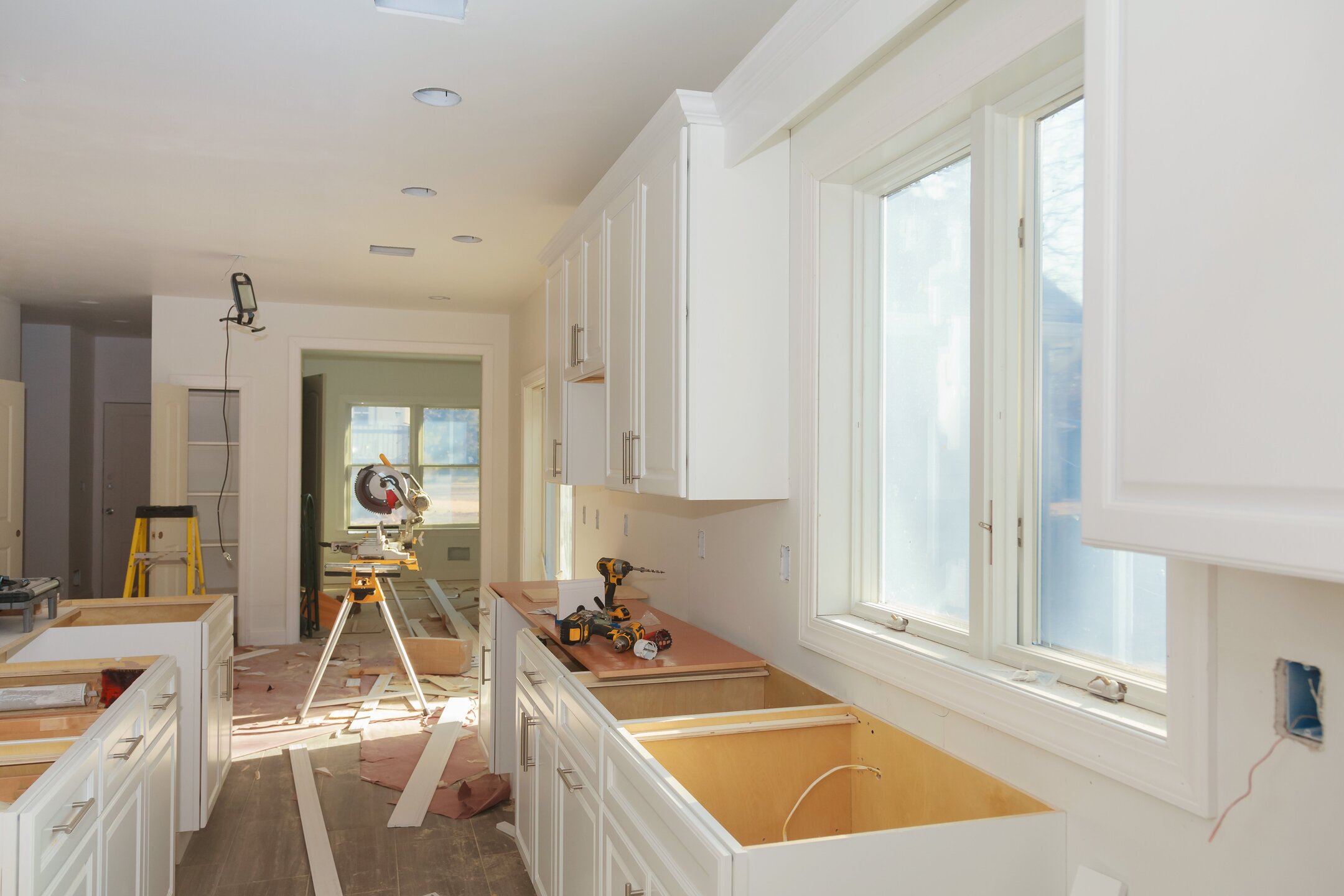



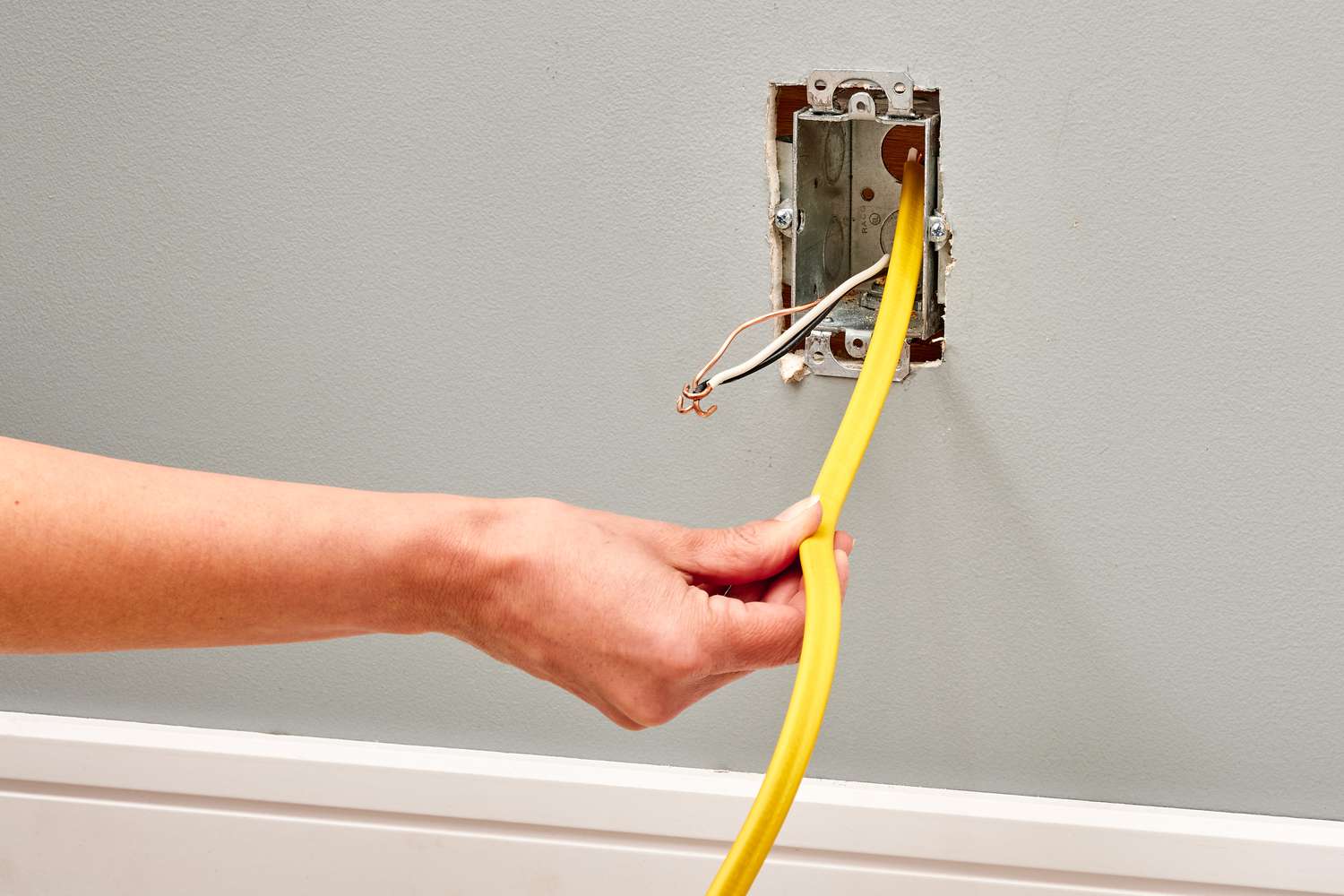

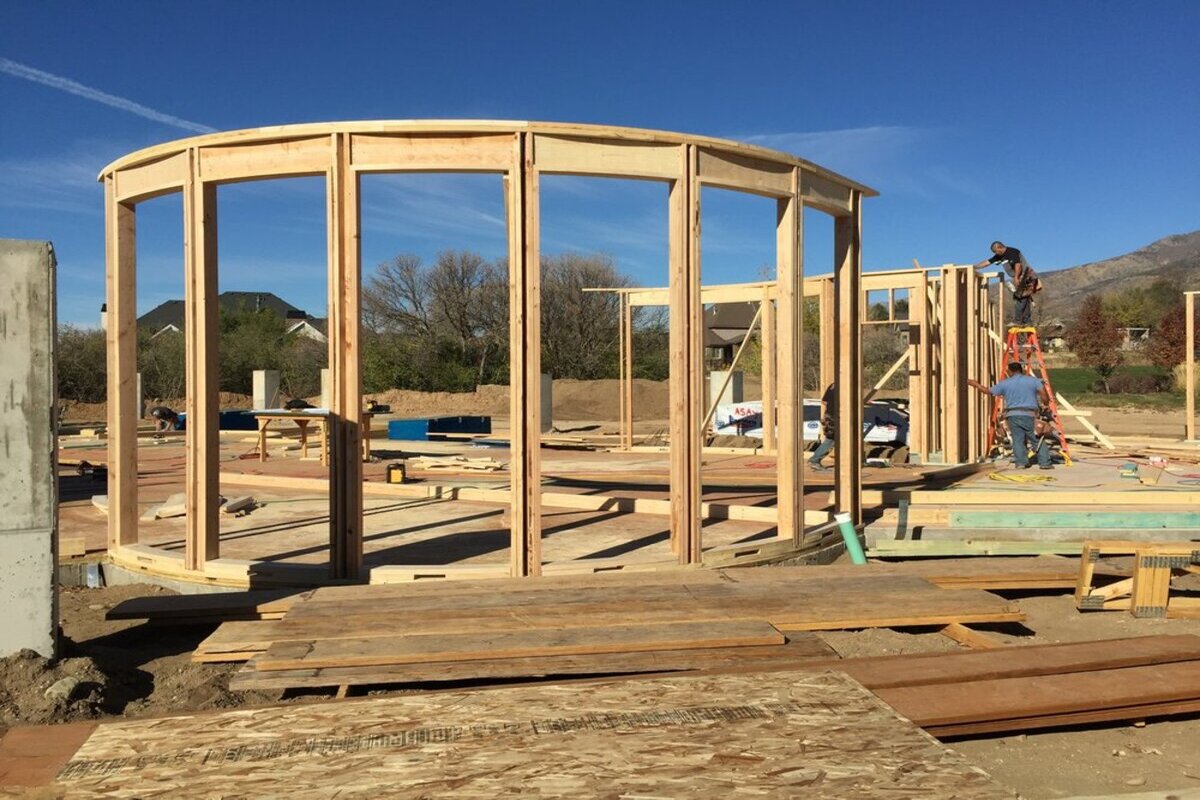

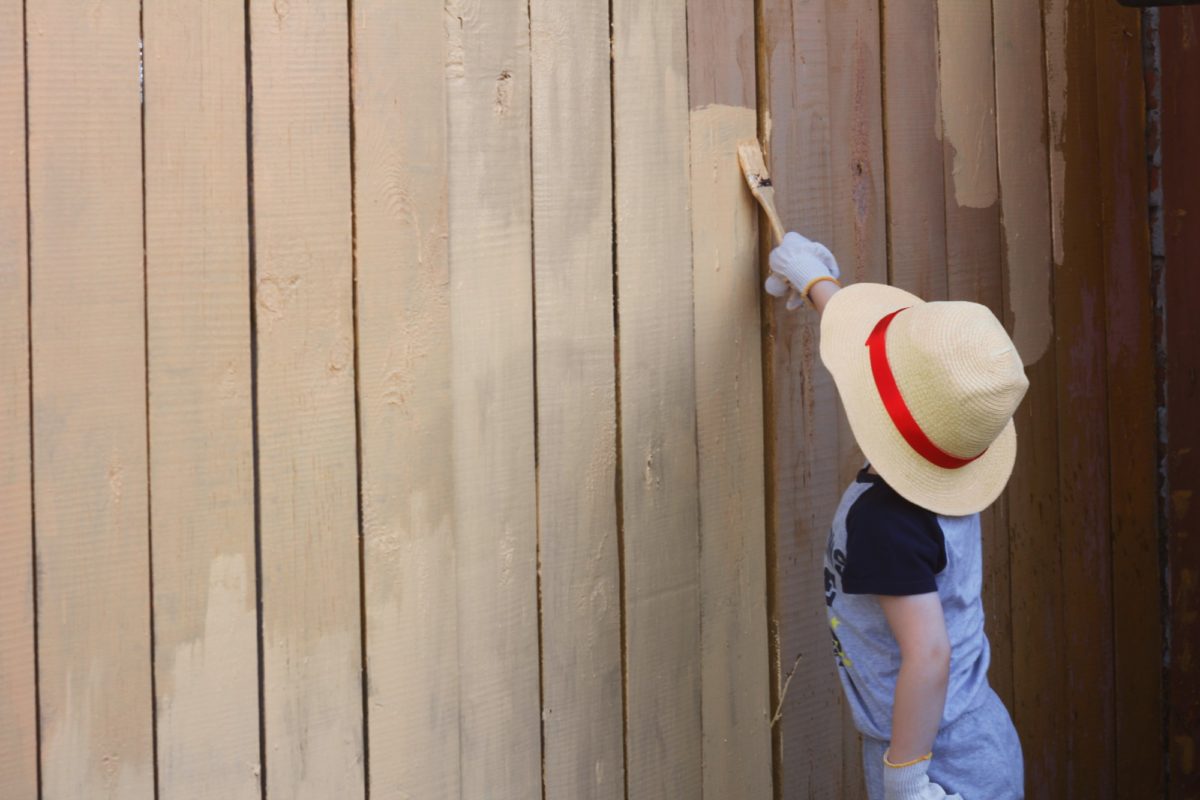

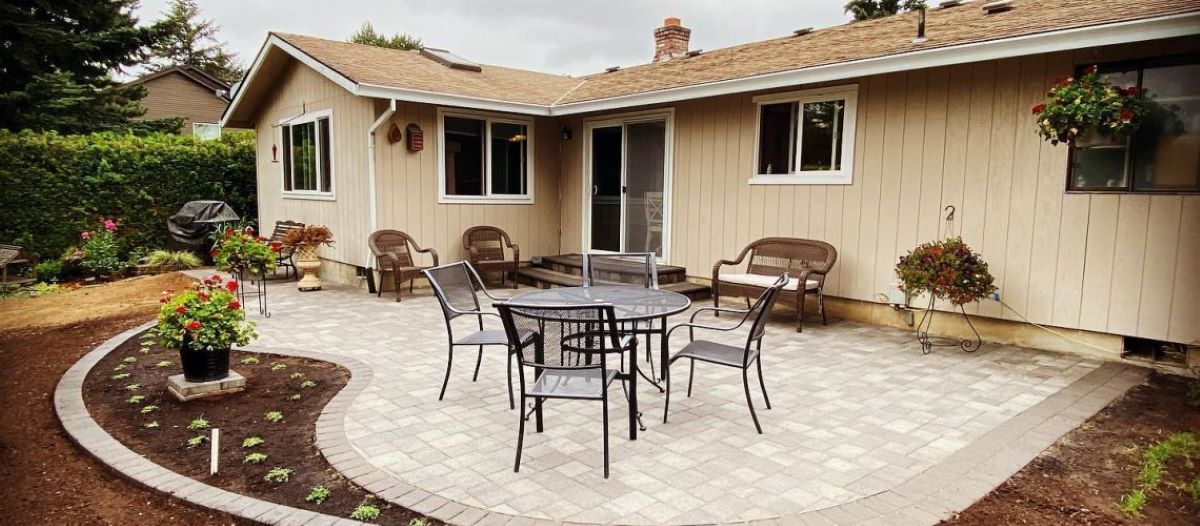
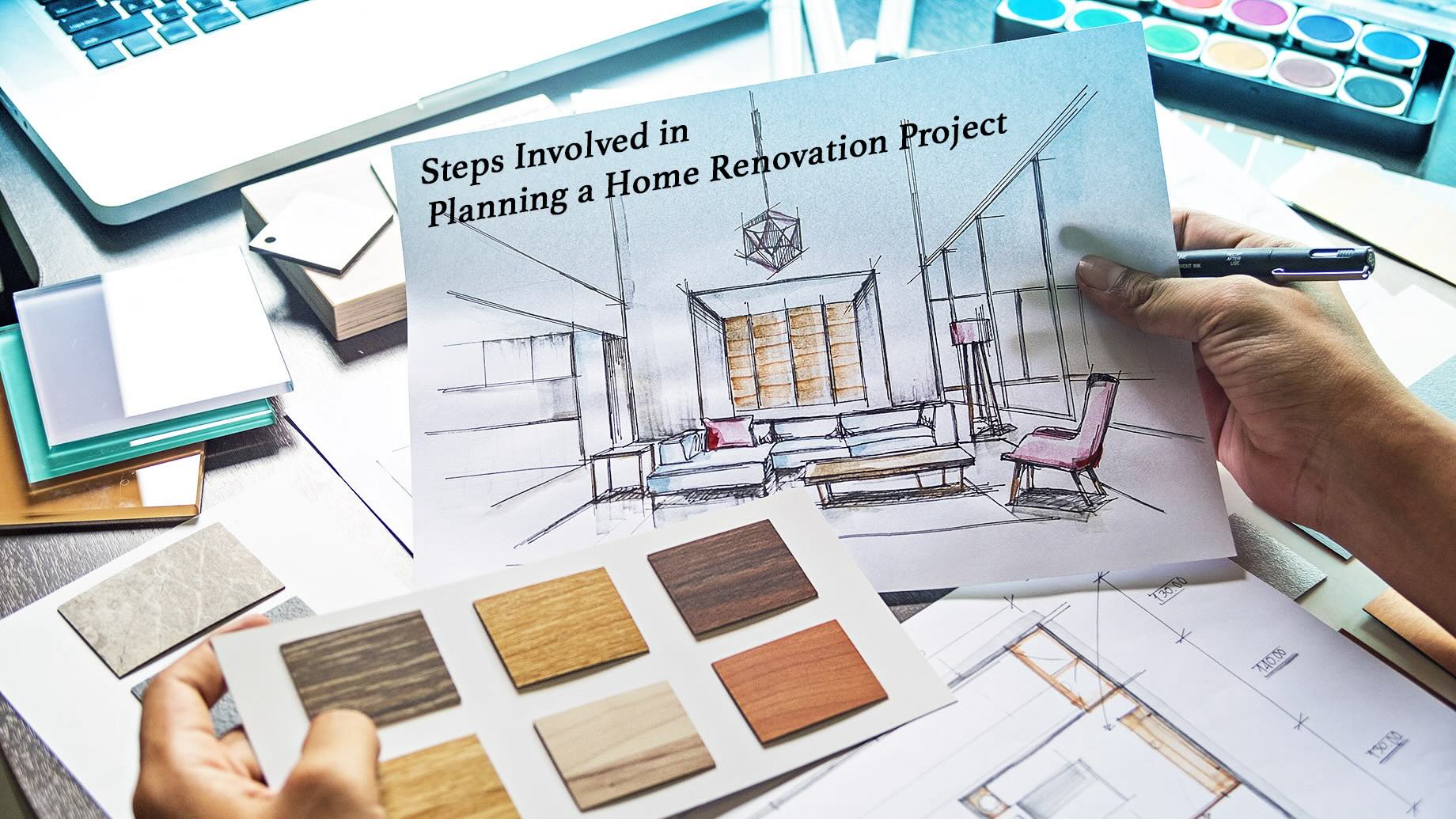

0 thoughts on “How To Survive A Home Renovation”